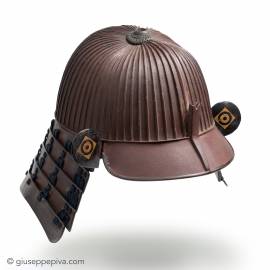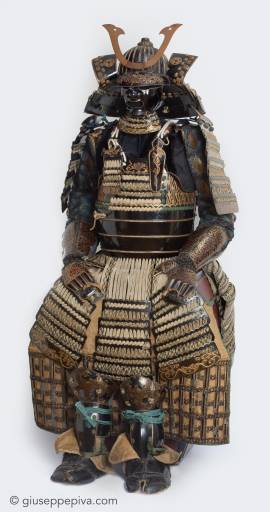Bamen school, Momoyama period, ca. 1600Signature: Echizen (no) Kuni Toyohara-jū Masayuki 越前国豊原住正行Little historical information is available about the Bamen school. Active as early as the end of the Muromachi period (1333-1573) in Echizen province (northwestern Japan) first in Toyohara and later in Maruoka, they began signing their kabuto using the name "Bamen" after they served in the field for Honda Narishige during the 1615 siege of Osaka. Armor production continued until towards the end of the Edo period, when the crisis involving all armorers forced the school's...
WORKS FOR SALE
Ni-mai do tosei gusokuSecond half of Edo Period (1615-1867)19th CenturyHeight: 86 cmDuring the 17th Century samurai families used to display a set of helmet and armor, weapons and banners outdoors on the Tango-no-Sekku Festival (The Boy’s Festival), held on the fifth day of the fifth month, designated as an important ceremonial day by the Edo Shogunate Government. Later in the Edo period these items, except for the banners, were moved indoor, on rooms facing the street. The style of displaying varied in accordance and the armors gradually became miniaturized, thus keeping splendid...
Momoyama period (1575-1615)Late 16th centuryProvenance: Tachibana clan With a wood storage box with inscription describing that this helmet is believed to be one of about 280 gold peach-shaped helmets once in the collection of the Tachibana family and dated Spring 1961. A gold lacquer helmet of momonari shape with a single-plate shikoro. The momonari shape (peach-shaped) is inspired by European helmets, specifically designed to deflect the firearm's bullets.This kind of helmet is well known: they were made for the campaign of Korea (1592–98) in Kyushu Island. The...
Copyright © 2016 - giuseppe piva - VAT: 05104180962










